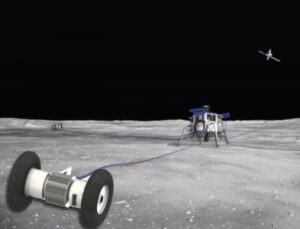
Scientists at the Colorado University-Boulder have laid out a roadmap for a decade’s worth of scientific research on the Moon. As detailed by a CU publication, four university teams will participate in upcoming or proposed space missions using the Moon as a unique scientific laboratory for peering back to the dawn of the cosmos. The projects include:
- An instrument called Radio wave Observations at the Lunar Surface of the photoElectron Sheath (ROLSES), which is slated to land on the Moon in just over a year.
- Lunar Surface Electromagnetics Experiment (LuSee), which will collect similar data as ROLSES but on the far side of the Moon, where it will be shielded from interference produced by radio waves from Earth.
- A proposed satellite known as the Dark Ages Polarimetry Pathfinder (DAPPER), which could be in orbit around the Moon by mid-decade. The suitcase-sized satellite will carry four wire antennas and a box-shaped “patch” antenna, to pick up incredibly subtle traces of the early universe’s hydrogen clouds.
- Farside Array for Radio Science Investigations of the Dark Ages and Exoplanets, potentially by the end of the decade. FARSIDE will lay out more than 29 miles of wires on the moon’s surface in a spiral pattern to create a gigantic array for detecting cosmic signals.
Here’s the objective. The projects are designed to gather data on an unexplored time in the early universe, which astronomy professor Jack Burns describes as the “Dark Ages.” This is the period between the Big Bang and the time when the first stars formed. Because there were not stars, no visible light existed. This period of complete darkness lasted about 180 million years. Burns and other scientists have predicted that it will be possible to learn more about this era by detecting faint radiation emitted by clouds of hydrogen gas that filled the universe then.
“We’re probing that time period in the early universe when it all began. The very first stars are forming. The very first galaxies are forming, which will eventually lead to galaxies like the Milky Way, says Burns. “It’s a completely unexplored part of the early universe. We have no data from this period and no prospect of getting any data using traditional telescopes like the Hubble Space Telescope.”
Bacon’s bottom line: Scientific investigation will be a driver of early settlement on the Moon. The high value added of a lunar location — zero atmosphere, near-total vacuum, shielding from Earth’s radio interference — justifies the extraordinary cost of putting robots and humans on the orb.
